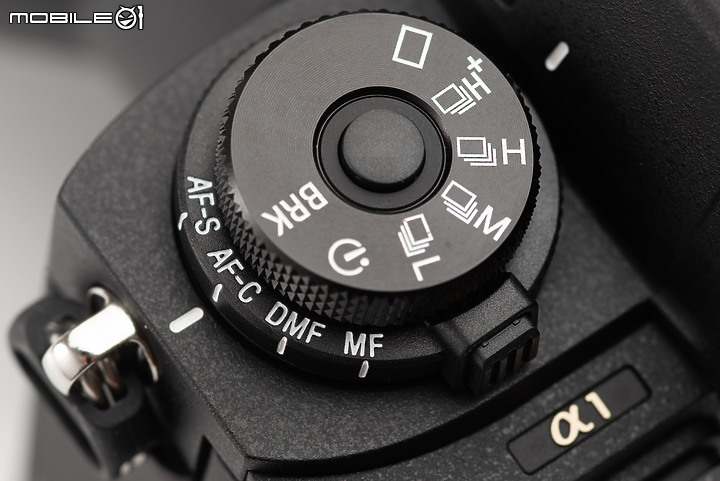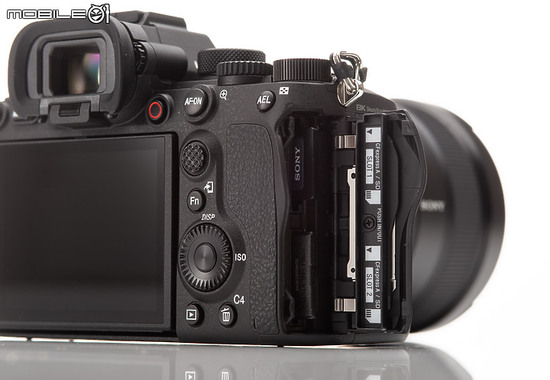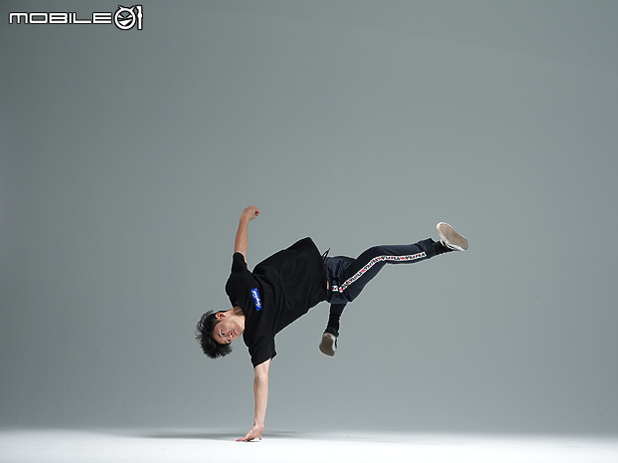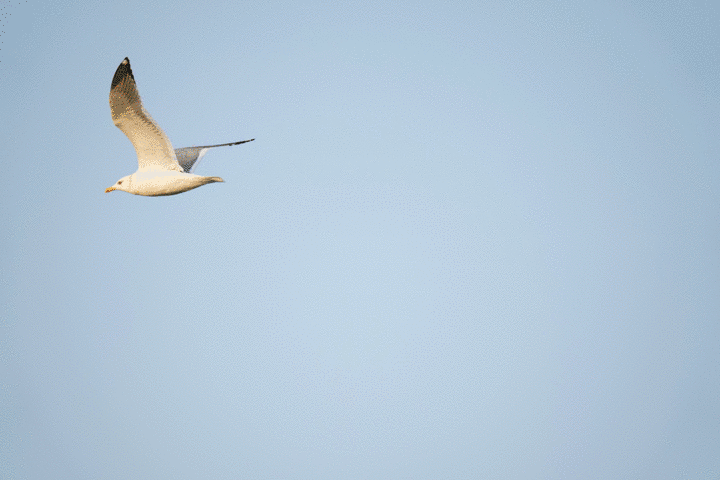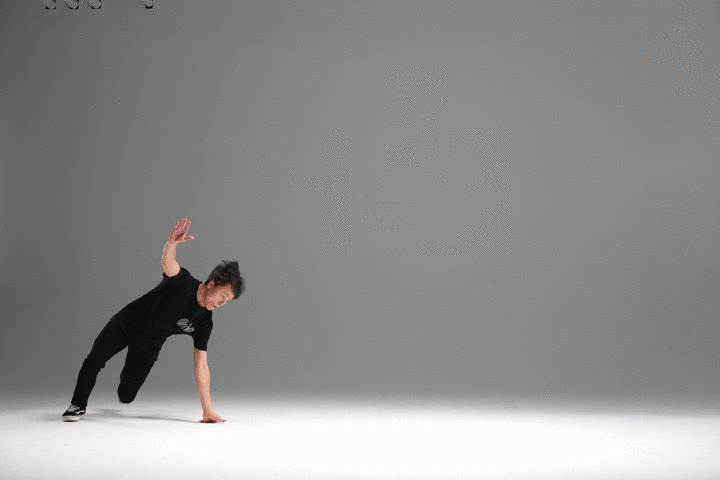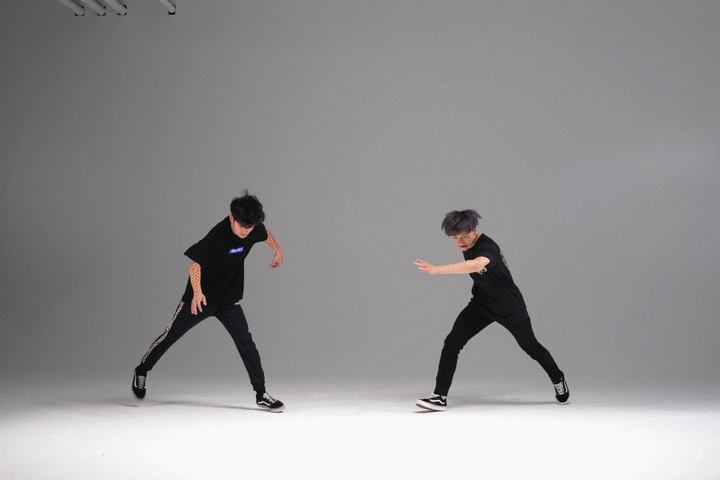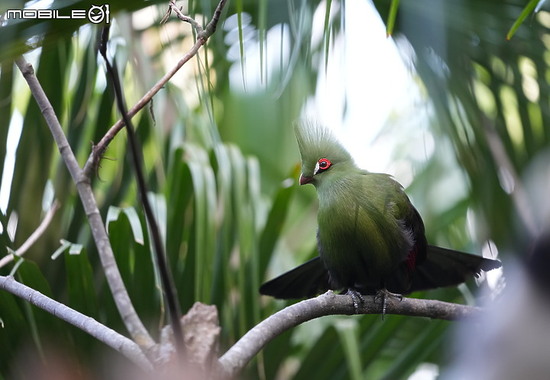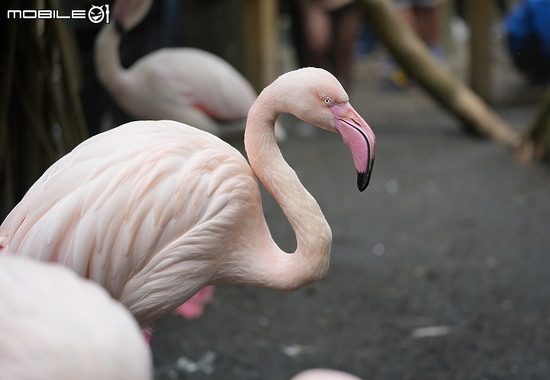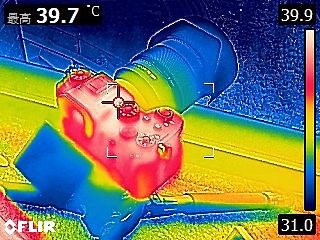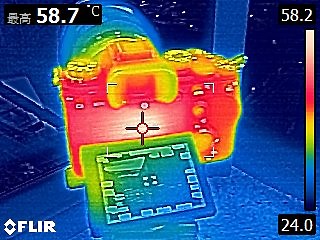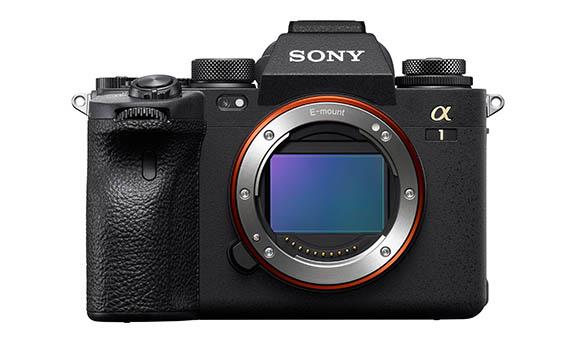The Alpha 1 takes the photography world by storm | Review by Mobile01
Mobile01 was eager to check out the new Alpha 1 and put its enhanced performance to the test for their readers. The team explored its exciting features, like the continuous shooting capabilities and new stacked sensor, and made detailed comparisons with other Sony models - to show how the Alpha 1 fares in terms of technology against other well-loved models. Read more to find out if the Alpha 1 is for you.
First Impressions
The Mobile01 team was convinced that the Alpha 1 could very well dominate the sports and journalism worlds. Right off the bat, the team recognised the leap from 24MP, 20fps continuous shooting to 50MP with 30 fps blackout free with no crop. The Mobile01 team was also more than impressed by the 8K recording, which they described as “a staggeringly powerful specification that has created a buzz in the photography community.”
The addition of the stacked sensor and dual BIONZ XR processing engine also caught their attention for its ability to produce large amounts of data at high speeds. Alpha 1 has the same dual BIONZ XR processors as the Alpha 7S III, but it is specifically fine-tuned for Alpha 1. With the refined dual processors, the camera is able to deliver ultra-high CMOS readout speed, large amount of memory, and ultra-fast processing performance. The Alpha 1 stacked sensor, meanwhile, follows the same structure as the Alpha 9, Alpha 9 II, and RX100 VII. The Mobile01 team has cited that these two features are what make the camera powerful and that the ultra-strong specifications are difficult to achieve for other manufacturers.
They were also particularly impressed by Alpha 1’s eye autofocus for birds, noting that bird photographers and other creators who need "ultra-high resolution and ultra-high continuous shooting speed" would appreciate these improvements the most.
Their testing touched on every element of the camera's features, including the electronic viewfinder, the increase in the number of ports, a flash synchronisation connector, ISO performance, and even down to the most intricate details that camera enthusiasts would certainly appreciate. Mobile01 has also taken extra notice on the USB transfer speed of Alpha 1, calling it a photographer’s "best bet" for the fastest connection.
Body of the Camera
In addition to its LCD that was designed specifically for viewing comfort, the Mobile01 team was also delighted that Alpha 1 has the most ports among Sony’s mirrorless cameras at the time of their review. Its ports include a network LAN terminal that supports 1000BASE-T, a flashing synchronisation connector, and a Micro USB port. It also has a microphone jack, 3.5mm audio jack, an HDMI Type-A port, and a USB 3.2 with an incredible transmission speed of 1212MB per second.
The dual memory card slots support UHS-II SDXC cards as well as new CFexpress Type A cards, similar to Alpha 7S III.
The review further highlighted the IR white balance sensor on the front of the camera enables a more accurate reading of white balance by sending information directly to the CMOS sensor without pass through the lens.
The Alpha 1’s shutter was also improved. Firstly, it was designed with a curtain shutter that automatically closes when the camera is switched off to reduce the chances of dust getting in when the lens is removed. It also has what is called the ‘dual driven shutter,’ it now comes with the traditional spring control and an electromagnetic drive, which acts as an accelerator for the curtain shutter, greasing its movements and allowing it to take optimal speeds. This allows the mechanical shutter to synchronise the flash lights at a speed of 1/400s.
Mobile01 also recognised the placing of Alpha 1’s buttons, saying that “The depth of each button is well defined and the direction of the joystick is not too obscure. We can say that this is a fairly established button layout system.”
The Alpha 1 can be mounted with a vertical grip, model VG-C4EM, which is also compatible with the previous iterations of the Alpha series.
Key Functions
Shutter and stacked image sensor
According to the reviewers, apart from its improved focusing ability, the ultimate breakthrough of Alpha 1 lies in the growth in the cooperation of the stacked image sensor and shutters. A key area of the review explained how the Alpha 1 breaks the previous limits of mechanical shutter speeds for flash synchronisation with the new dual driven shutter that uses a spring and electromagnetic drive, which allows the flash synchronization speed reach up to 1/400 second, meaning that they can shoot with a lower 2/3 EV shutter than before. This shutter speed can make CMOS sensor more sensitive to light, reducing the exposure time of the entire CMOS and even lowering ambient light. This gives users an increased creative freedom. The rapid CMOS readout "surpasses conventional CMOS sensors of the past" and the team determined that photographers can use this shutter speed to "suppress ambient light and gain more creative freedom."
Mobile01 assures its readers that the dual driven shutter will not affect a user’s normal use at all. Its minimum mechanical shutter time is still 1/8000 secs.
“As long as it is shorter than this time, the shutter will appear at the same time as the first and second shutter curtains fall. This is because the speed limit of the mechanical structure does not allow the entire CMOS to be exposed for 1/8000secs of a second at the same time, so it is achieved in a way similar to scanning, with the front and back curtain shutters falling. However, with this method, the entire CMOS is not exposed to the flash, and the image will be shadowed by the curtain shutter. This is why the synchronisation speed of full-frame curtain shutters has long been limited to 1/250s to 1/320s,” the Mobile01 review explained.
The Alpha 1’s dual driven shutter aims to break this limit. “Sony's engineers have used an electromagnetic drive to make the shutter fall faster so that the camera can reduce the exposure time of the entire CMOS sensor to an unprecedented 1/400secs of a second,” the review continued.
"Shortening the shutter synchronisation speed can be a real boon to photographers. Although 2/3 EV isn't much, I'm glad that manufacturers are starting to take this into account," the Mobile01 review said.
Thanks to the mechanical shutter, Alpha 1 had no noticeable rolling shutter effect, which usually appears when the camera vibrates during unstable shots like in hand-held or vehicular shooting. “It is not that there is none, but the rolling shutter effect is minimal. The mechanical shutter curtain has a very short fall time, so short that your subject has to move very fast in order to feel the time difference between the upper and lower CMOS sensor’s rows due to the mechanical shutter.”
Alpha 1’s CMOS image sensor works together with the BIONZ XR processing engine to reduce rolling shutter effect by: its signal processing area that has a noticeably larger area, where it processes the signal better and faster; its colour filter that has a larger useable area; and its image sensor that has its own cache, allowing the user to send large amounts of data to the CMOS before it even reaches the processor. These layers reduces the time difference between the top to bottom sweep of the CMOS, allowing the electronic shutter to synchronise with the flash at 1/200th of a second. "With the Alpha 1, we believe that the most valuable feature of this camera is not just the focus capability or the 50MP, but the breakthrough growth that comes from the synergy of the stacked sensor and shutter,"Mobile01 said in the review.
Continuous shooting capability
Alpha 1’s powerful dual BIONZ XR processor allows it to produce 10 frames per second using the mechanical shutter and 30 frames per second using the mechanical shutter. For X.FINE JPEG, users can shoot up to a maximum of 182 frames, approximately amounting to six seconds, if there is limited storage. Normal quality can then record up to 400 shots, with a 13-second continuous shutter press. For compressed RAW files, the flagship camera can take up to 238 shots and record up to 82 shots.
The team at Mobile01 was really amazed by this feature, saying, “At 30fps, it is actually the equivalent of a video. Just look at the amazing smoothness!”
Bird eye autofocus
Mobile01 also took time to dive into the addition of focusing capabilities for bird eyes to the Real-time Eye AF feature and described the high success rate for recognising birds' eyes. The reviewers even went to an ecological farm and a wetland to test out the new feature and shot pelicans, parrots, black-faced spoonbills and other wild birds. The feature also detects humans, which is still its strongest forte, and other animal eyes, so the team also tried it out on alpacas. Mobile01 had a lot of positive things to say about the Real-time Eye AF feature, saying that it has "the highest follow-through and the best reliability."
“The Sony team said that the eye focus for birds is not fool proof as there are some situations rendering them unrecognisable. One of them turned out amusing but logical for me: In birds, when both the left eye and the right eye are in the frame, the focus for bird eyes is disabled and you cannot choose between the left and the right eye. This is because birds have a wider field of vision than humans, and usually you see wild birds with only one eye facing you. Hence, they have designed the camera to focus on one eye only,” Mobile01 stated.
The review also noted that the feature is for ‘bird eyes,’ not ‘bird face.’ It also mentioned that there may be situations where the bird eye autofocus will not completely work, such as in instances when the bird’s eye is not visible in a frame or when there too many birds and the camera cannot focus on a single eye. In such cases, the Alpha 1 will turn to 4D focus detection, so users can still get the kind of focus that they want.
“In practice, however, you can still turn on the focus for bird eyes after shooting a bird. It will then continue to perform 4D focus detection when it does not detect the bird eyes,” the Mobile01 review said. “Ultimately, face/eye recognition remains the highlight of this focusing system. Tracking has the highest follow-through and the best reliability,” it added.
Gallery
ISO performance
The reviewers at Mobile01 compared the difference between Alpha 1 and Alpha 7R IV at various ISO levels. They noted that both models have CMOS that are back-illuminated with similar image quality. Additionally, despite the difference in pixels, the photo sizes from both cameras were not that far from each other.
After a few test shots, the reviewers found that the difference is noticeable, especially at ISO 12800. They have determined that, despite the details remain similar, the Alpha 7R IV has a lot more noise than Alpha 1, which, they said, has “really excellent” high ISO noise handling.
Known for its high ISO performance that can go up to super high ISO 409 and ISO 600, the Alpha 7S III was then tested next to compare with the flagship Alpha 1 in terms of high ISO video noise.
“One thing I would like to draw your attention to in particular is that the Alpha 1's ISO 3200 is on par with the Alpha 7S III's performance, even better than the Alpha 7S III at ISO 6400. But we all know that when the Alpha 7S III shoots with the S-Log3, ISO 12800 makes for super clean noise. Beyond ISO 12800 the Alpha 7S III wins hands down, with the Alpha 1 trailing behind and the Alpha 7R IV never a match at all,” said Mobile01.
Handling high ISO relies on the number of pixels and the ability of a camera’s processor. Since the Alpha 7S III was designed to have more pixels per unit area and has a smaller pixel count, it dominated the high ISO category. However, Alpha 1’s 50 million pixels still delivered a performance similar to Alpha 7S III, which the reviewers found really commendable.
50 to 200 megapixel resolution
The Alpha 1 features a pixel-shifted multi-shot mode that allows users to choose four shots and combine them altogether to produce a single photo with ultra-high quality of 50.1MP, or combine 16 frames into one to make a 199MP photo. All this is possible through the Sony computer software Imaging Edge.
|
No. of Shots |
Number of pixels |
Resolution |
File size |
| 1 shot | 49.76 million | 8,640 x 5,760 | 38.3MB |
| 4 shots combined into 1 shot | 51.6MB | ||
| 16 shots combined into 1 shot | 199 million | 17,280 x 1,1520 | 216.1MB |
Although each shutter of the pixel shift must be by way of an electronic shutter, users can easily trigger flash on each shot, with Alpha 1 having a flash synchronisation speed of 1/200s. This way, the photographer can still capture ultra-high resolution photos by following their usual routines without needing to come up with new triggering methods. This feature is best for photographers who need to produce larger outputs.
8K Videos
The standard 8K video's resolution is 7680 x 4320 4:2:0 10bit, with 33.17 million pixels processed at 30fps. However, the format of Alpha 1's 8K videos is the mandatory H.265 for XAVCS HS. Mobile01 advises users to upgrade their computers significantly if they will be working with recordings of such quality.
“It is also because of the H.265 format that the 8K video's stream is 400Mbps, which is below the maximum stream of the Alpha 1. If you want to go up to 600Mbps, please select the 4K XAVCS-I 4: 2: 2 10bit options. The Alpha 1 is also capable of outputting RAW video at a resolution of 4332 x 2448 and up to a 16-bit rate, but only via HDMI,” the Mobile01 review explained.
Overheating test
Finally, the Alpha 1 was put to an overheating test. The Mobile01 team used the camera in an enclosed space at a room temperature of 28-30 degrees, with no wind. Here’s what they found upon trying out the overheat protection feature
Overheat protection was turned on and the temperature was measured 15 minutes after forced shutdown (it was not possible for Mobile01 to measure while it is being shut down).
Overheat protection was turned off and the temperature was after recording for 2:28 minutes, with the maximum temperature being in the area behind the sensor.
Here are the overheating warnings and forced shutdown times:
|
8K 30P Temperature 30°C |
Overheat warning |
Forced shutdown |
| Overheat protection on | 17:30 | 24:25 |
| Overheat protection off | Did not appear after 2:28:54 | - |
The team tried recording an 8K video with overheat protection on . Just after 17 minutes and 30 seconds of recording, the camera already displayed a prompt warning, and it was then forced to shut down after 24 minutes and 25 seconds. After 15 minutes since the shutdown, the temperature was up to 39.7°C.
The team then recorded another 8K video, but this time, with overheat protection off. It took more than two hours for the camera to display the overheat warning and it was not forced to shut down. After the reviewers manually shut down the unit, the temperature reached 58.7°C.
“I think if you turn off the overheat protection, you should be able to handle most of your shooting needs,” Mobile01 said.
The final verdict
Overall, the Mobile01 team highlighted and applauded Alpha 1’s many outstanding capabilities.
“The 50.1MP 30fps continuous shooting is, in my opinion, only one of the Alpha 1's many capabilities. It is hard to understand the context just by looking at the specifications. However, if you want to start from the beginning, you have to go back to the Alpha 1's sensor and the special dual Bionz XR processors behind it,” the team said in the article.
“The dual Bionz XR processors built specifically for the Alpha 1 have to be capable of producing such a large amount of data at such high speeds with a 50.1MP CMOS sensor. It also does focus calculations, noise reduction, human eye or bird eye recognition, 8K image processing and much more,” they added.
Mobile01 have concluded that the stacked sensor’s integral cache memory and large processing circuitry are capable of achieving the following:
1. Ultra-fast 1/200s readout speed
2. 1/200s electronic shutter flash synchronisation speed
3. Ultra-low rolling shutter effect
4. 120 focus/exposure detections per second
5. 30fps recording capability
6. Continuous shooting capability without blackout
The review was proud to share that these core skills are a key of what makes Alpha 1 the unique and powerful camera that it is.
“There is no way to talk about the Alpha 1 without talking about that CMOS sensor,” the reviewers said.
Their prediction is that there will be "more and more photographers relying on Alpha 1 in the future, whether they are photojournalists, eco-documenters, performance photographers, or even commercial photographers working in studios." who will all be looking forward to the more positive impact the Alpha 1 can have on their work.
“I can feel that Sony is still passionate about making cameras and their engineers are still looking for breakthroughs. For example, they are developing stronger sensors and breaking the limits of electronic and mechanical shutters, while also paying attention to the details that photographers will notice. These improvements, big and small, really move me and I look forward to Sony's continued development of better cameras in the future,” Mobile01 concluded.
Read Mobile01’s original review of the Alpha 1 here. Please note that the original review is in Traditional Chinese, and was translated for the purpose of this article.

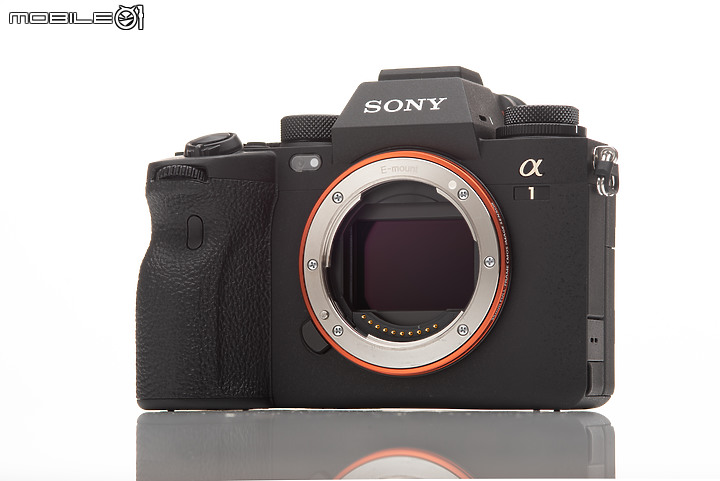
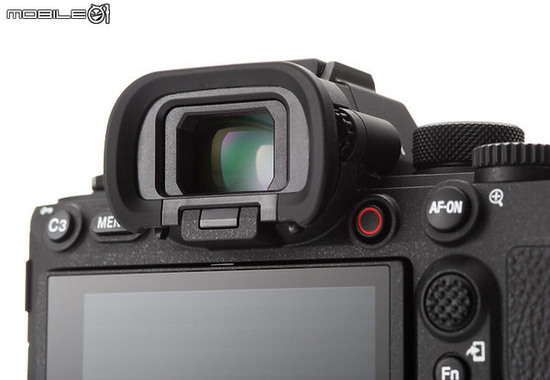
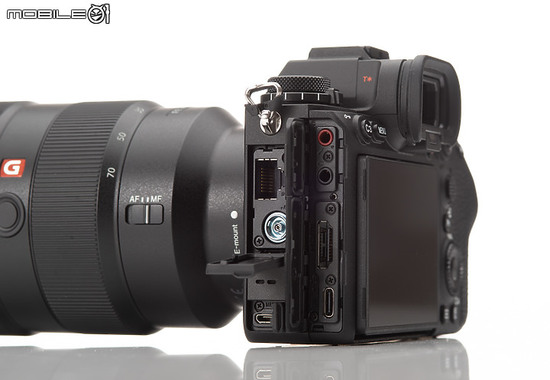
![mobile01-dcc6327d94878fdb7e68a3e14f562ba8[2].jpg](/sites/default/files/2022-05/mobile01-dcc6327d94878fdb7e68a3e14f562ba8%5B2%5D.jpg)
